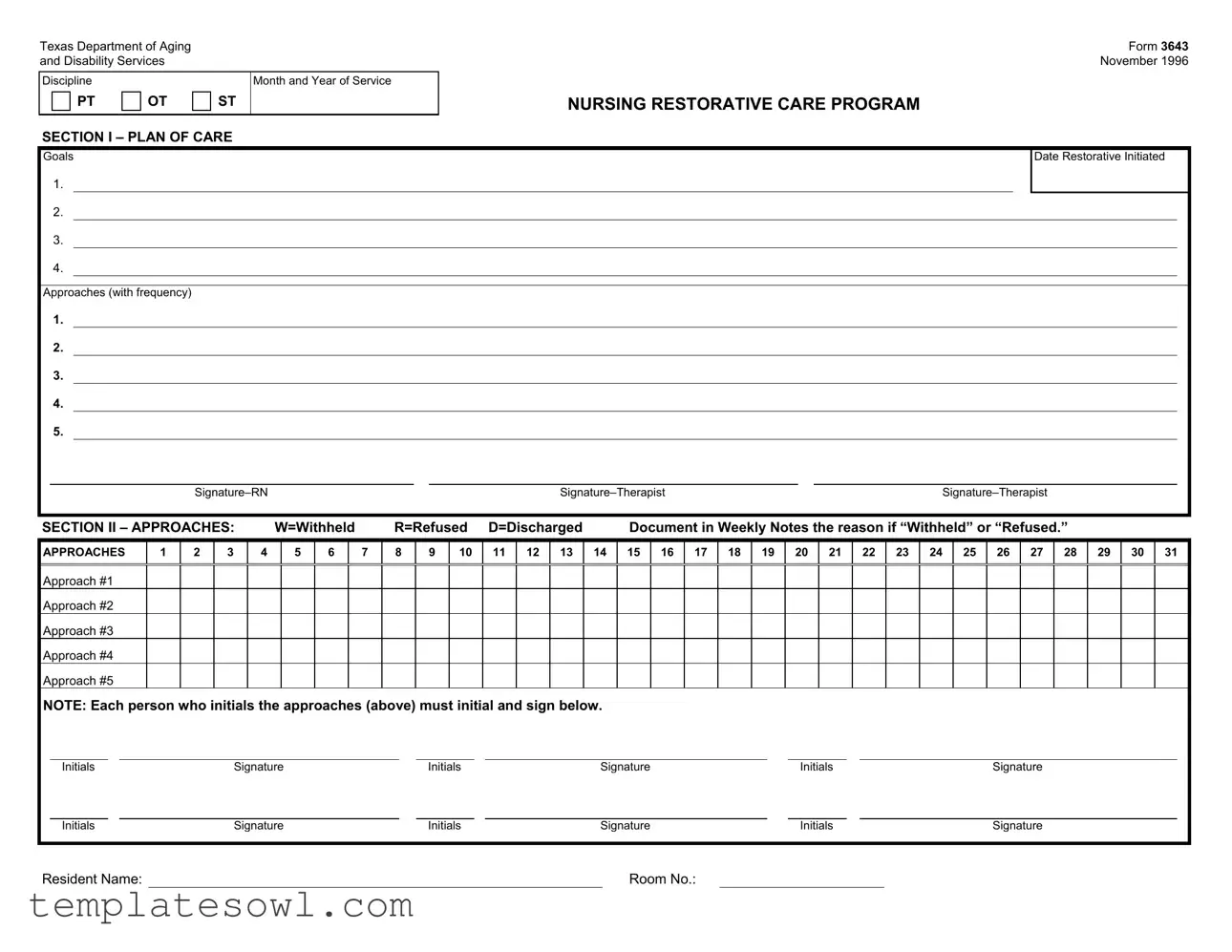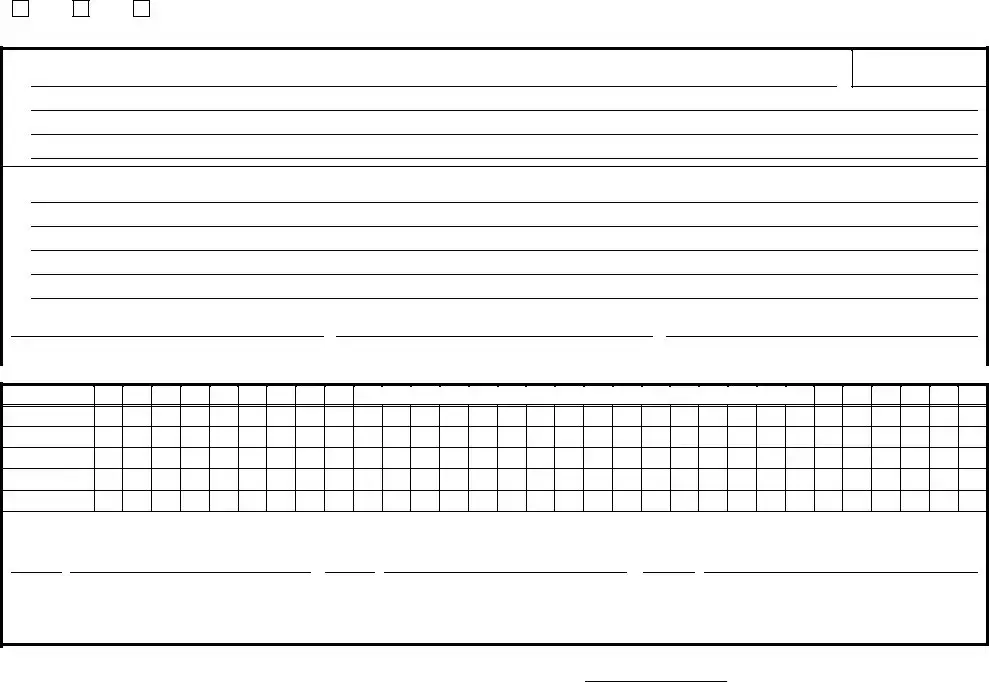What is Form 3643 and its purpose?
Form 3643 is used by the Texas Department of Aging and Disability Services as part of the Nursing Restorative Care Program. It serves as a structured outline for documenting a resident's plan of care, which helps professionals track and assess the goals and approaches for each individual's care. The form ensures a comprehensive approach to restorative care and fosters communication among staff members involved in the resident's care.
Who is responsible for filling out Form 3643?
The form must be completed by qualified healthcare professionals involved in the resident’s care, typically Registered Nurses (RNs) and therapists. These individuals will gather the necessary information, set goals, document approaches, and ensure the ongoing revision of the plan as needed.
What information is included in the Plan of Care section of Form 3643?
The Plan of Care section includes specific goals for the resident, approaches to achieve those goals, and the date when restorative care was initiated. This section is critical as it outlines the customized strategy for the resident’s rehabilitation and well-being.
How should changes to the Plan of Care be documented?
If changes are recommended during the monthly review, they must be documented by updating the Plan of Care in the next edition of Section I on Form 3643. It is essential to capture all necessary adjustments to ensure that care remains appropriate and tailored to the resident's needs.
What should be done if an approach is withheld or refused?
When an approach is withheld or refused, it is crucial to document the reason in the weekly notes. This transparency aids in understanding the resident’s preferences and needs, which can influence future care strategies.
How is the resident’s response monitored throughout the program?
Section III allows staff to document the resident's response and progress towards goals on a weekly basis. Each week, the responses are signed and dated by staff, providing a clear record of changes over time and facilitating ongoing evaluations of the care provided.
Can the program be discontinued, and how is this determined?
Yes, the program can be discontinued if it has been determined that it is no longer appropriate for the resident. This decision is made during the monthly review based on the staff's assessment of the Plan of Care's effectiveness. If the decision is made to discontinue the program, it should be documented appropriately in Section IV.
What are the signature requirements for Form 3643?
Every professional who initials the specific approaches must also sign the form below those initials. This requirement ensures accountability and indicates that all professionals are aware of the resident's care plan and their contributions to it.
Is there a specific date for which the form was originally designed?
Form 3643 was designed in November 1996. While the content and structure are still relevant, periodic updates may occur to reflect current best practices in restorative care and services for residents.


